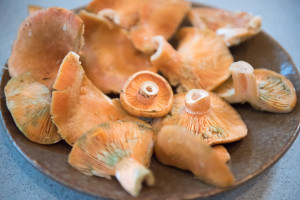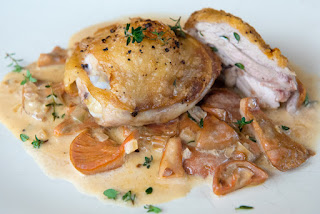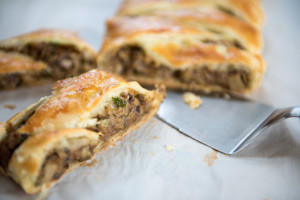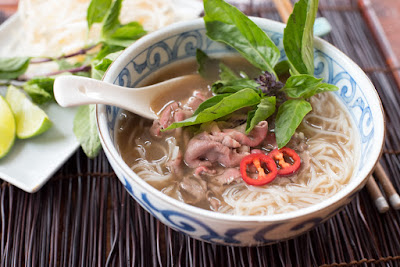 EVERYONE AT THE Mekong Market on Rainier Avenue knew what I was up to. The proprietor, always on the move, paused long enough to look at the two packages of beef bones in my basket and give me the thumbs up. They were a dollar a pound. Then he guided me by the elbow to a refrigerated aisle with fresh rice stick noodles.
EVERYONE AT THE Mekong Market on Rainier Avenue knew what I was up to. The proprietor, always on the move, paused long enough to look at the two packages of beef bones in my basket and give me the thumbs up. They were a dollar a pound. Then he guided me by the elbow to a refrigerated aisle with fresh rice stick noodles.
At the checkout, as I unloaded a bunch of basil, bean sprouts, a box of yellow rock sugar, and those fresh noodles, the customer in front of me said, “So you’re making pho?”
I explained that I had a sick kid at home and this was his request. It was my first attempt.
“Make sure to boil out the impurities,” she added. This is a common refrain. All my sources recommend a brief (three to five minutes) initial boil to exorcize from the beef bones what some call impurities and other call, simply, the scum.
I’m all for getting rid of the scum.
Here in Seattle there is likely more pho noodle soup for sale than any other dish. It’s our favorite fast food. My kids have grown up with it and have some opinions. I wanted to do it right.
Besides making comfort food for my ailing boy, I also wanted to test an idea that had been percolating in my head for a couple years. There are two ingredients in a typical pho meant to impart a hint of licorice-like flavor, specifically star anise and fennel seeds. Star anise is native to southeast Asia. I wondered if I might use our native licorice fern instead of a spice from halfway around the world. (Read more about licorice fern here.)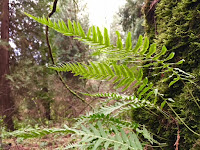
I split my batch of pho and designed a simple A-B test: one pot spiced with star anise and the other with licorice fern.
The short answer is that both phos were smashing. The licorice fern, however, won’t end up as a local substitute for star anise in my future attempts. Instead, it proved to be yet another possible variation in an eminently malleable dish that’s always been a cultural mashup from its earliest beginnings in French-colonial Vietnam.
After testing the two batches, I recombined them. The fern root can’t take the place of star anise, but like a stick of black licorice candy, it adds a back-of-the-palate sensation of spicy coolness—a palpable sensation similar to the way Sichuan peppercorn numbs and tingles the lips.
There are plenty of very similar recipes online for pho. Most of them recommend using cut up beef bones (knuckles, shins, etc.) and doing an initial boil to cook out the foam and impurities. This results in a broth that isn’t murky. Charring the onions and ginger in the broiler before adding to the broth is another crucial step. I adapted my recipe from this video.
5 – 6 lbs beef bones
6 quarts cold water
2 medium onions, quartered
4-inch piece of ginger, halved lengthwise
1/4 cup fish sauce
1 1/2 tbsp salt
1-inch piece yellow rock sugar
2 cinnamon sticks
1 tbsp coriander seeds
1 tbsp fennel seeds
6 star anise
6 cloves
2 pencil-sized licorice fern roots, peeled and cut into 1/4-inch pieces
thin-sliced beef such as rib-eye, skirt, ti-tip, sirloin, etc.
1 package thin bánh phở rice stick noodles
sprigs of basil, mint, cilantro
bean sprouts
lime
thin-sliced red pepper
sriracha and hoisin sauce
1. In a large stock pot, cover beef bones with cold water and heat over high flame.
2. Meanwhile, heat oven on broil and place onions and ginger in a roasting pan just beneath heat. Roast 15 – 20 minutes, turning occasionally with tongs, until charred on all sides.
3. Toast spices (cinnamon sticks, coriander seeds, fennel seeds, star anise, and cloves) in a dry pan over low heat for 5 minutes, careful not to burn.
4. When stock pot comes to boil, cook 3 minutes so that scum rises to the surface. Drain in sink and rinse bones and pot with warm water. Return bones to pot and cover with 6 quarts of cold water. Bring to boil once again, then reduce heat to simmer.
5. Once broth is simmering, add roasted onions and ginger, fish sauce, salt, yellow rock sugar, toasted spices, and licorice fern. Simmer, uncovered, at least 3 hours. Skim off any scum that rises to surface.
6. Remove bones with tongs, then strain broth through a fine mesh strainer to remove remaining solids. Refrigerate broth overnight to easily separate remaining layer of fat, if desired.
7. To assemble finished dish, add rice noodles and thin-sliced beef to bowl. Cover with hot broth and serve with bean spouts, lime wedges, hot pepper slices, and sprigs of basil, cilantro, and mint, along with condiments such as sriracha and hoisin.


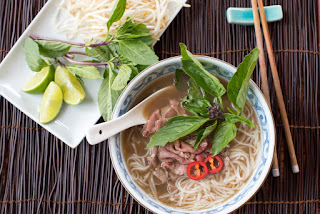
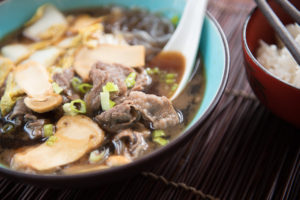 AS A CHILD of the seventies, I’m well acquainted with regrettable fads, from pet rocks to Farrah Fawcett haircuts.
AS A CHILD of the seventies, I’m well acquainted with regrettable fads, from pet rocks to Farrah Fawcett haircuts.
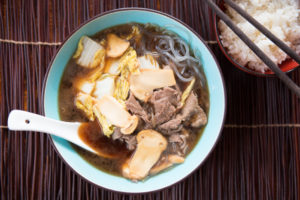
 ONE OF THE BENEFITS of picking morels east of the Rockies is the chance to find ramps.
ONE OF THE BENEFITS of picking morels east of the Rockies is the chance to find ramps.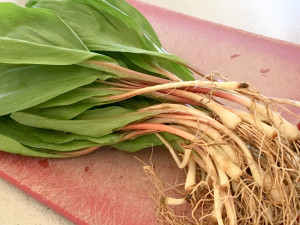
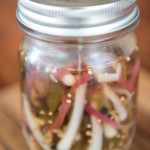
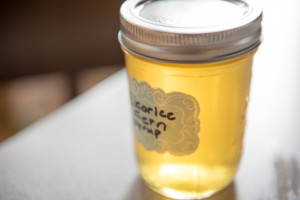 THE LICORICE FERN is a beauty that lives in colonies in mixed lower-elevation forests of the Pacific Northwest, where it grows on trees, often well up in the canopy.
THE LICORICE FERN is a beauty that lives in colonies in mixed lower-elevation forests of the Pacific Northwest, where it grows on trees, often well up in the canopy.
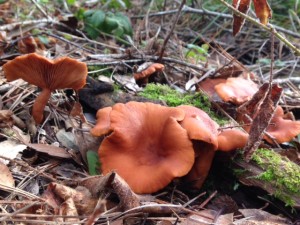 CANDY CAPS ARE a complex of species in the milk cap genus, Lactarius. They’re noteworthy for smelling of maple syrup once dried, effectively putting mushrooms on the dessert menu. Two species of candy cap are commonly encountered in coastal California: L. rubidus and L. rufulus. The latter grows with oaks and is quite mild, but the former—if dehydrated at a low temperature (I think we set our dryer to 95 degrees)—is wonderfully fragrant. We found hundreds of them recently growing among a stand of old Monterrey pines.
CANDY CAPS ARE a complex of species in the milk cap genus, Lactarius. They’re noteworthy for smelling of maple syrup once dried, effectively putting mushrooms on the dessert menu. Two species of candy cap are commonly encountered in coastal California: L. rubidus and L. rufulus. The latter grows with oaks and is quite mild, but the former—if dehydrated at a low temperature (I think we set our dryer to 95 degrees)—is wonderfully fragrant. We found hundreds of them recently growing among a stand of old Monterrey pines. 1 small handful dried candy caps
1 small handful dried candy caps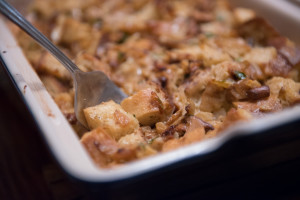 THIS TOTALLY UN-FUSSY bread pudding shines with a medley of wild mushrooms.
THIS TOTALLY UN-FUSSY bread pudding shines with a medley of wild mushrooms. THE
THE 

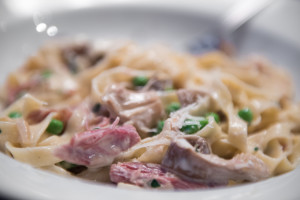 I’VE MADE PLENTY of Asian-style dishes with wild oyster mushrooms, like
I’VE MADE PLENTY of Asian-style dishes with wild oyster mushrooms, like 
